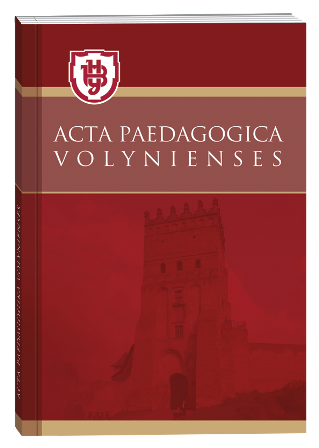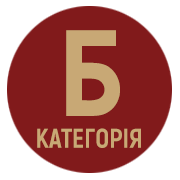USING A GAMIFIED ENVIRONMENT IN TEACHING MATHEMATICS TO PRIMARY SCHOOL STUDENTS
DOI:
https://doi.org/10.32782/apv/2024.2.2Keywords:
distance learning, gamification, gamified educational environment, learning process, teaching mathematics, primary school studentsAbstract
The article is devoted to finding the conditions for creating a gamified environment in the process of distance learning mathematics for primary school students. It is noted that in modern conditions, distance learning has become the only available form of the educational process in the primary education system. One way to organize distance learning in mathematics is to create a gamified environment using electronic services and web platforms. The purpose of the article is to study the conditions for the effective organization of a gamified environment in the process of distance learning mathematics for younger students. Based on the analysis of theoretical sources, the essence of gamification of learning as a process of applying typical elements of the game and game mechanics in various contexts of the educational process (scoring, competition, leader boards, etc.) is revealed. The article reveals the tools of gamified learning, analyzes its advantages and disadvantages. It is determined that gamification creates an environment that motivates students to be more involved and active in learning, which leads to better results. The main results of the study are to identify the main disadvantages of implementing gamification in the educational process of primary school. Namely: the difficulty in maintaining a balance between the gamified environment and the educational content; problems with students' access to gadgets, computers, the Internet; inadequate preparation of primary school teachers to create an effective gamified environment in the process of teaching mathematics to their students. Conclusions and discussion. The developing gamified environment is gradually becoming a real competitor to traditional learning. Ensuring an effective gamified environment in the process of distance learning mathematics for primary school students is possible by meeting certain conditions, namely: game services should be integrated into the learning process and help achieve learning goals; game services should be interesting for primary school students, motivate them to learn; games need to be used systematically; carefully think through the incentive system; it is important to distinguish between games for distance and blended learning.
References
Дядікова О. Гра як інструмент: що таке гейміфікація ? 2019. URL: https://mistosite.org.ua/uk/articles/hra-iakinstrument-shcho-take-heimifikatsiia.
Жерновникова О.А., Перетяга Л.Є., Ковтун А.В., Кордубан М.В., Наливайко О.О., Наливайко Н.А. Технологія формування цифрової компетентності майбутніх учителів засобами гейміфікації. Інформаційні технології і засоби навчання, 2020. Т. 75. № 1. С. 170–185. URL: https://journal.iitta.gov.ua/index.php/itlt/article/view/3036
Переяславська С., Смагіна О. Гейміфікація як сучасний напрям вітчизняної освіти. Відкрите освітнє е-середовище сучасного університету, 2019. С. 250–260. URL: https://openedu.kubg.edu.ua/journal/index.php/ openedu/article/view/230.
Титаренко Л., Сінопальнікова Н., Масюк О. Шляхи організації навчання математики молодших школярів з порушеннями мовлення в умовах воєнного часу. Актуальні питання гуманітарних наук. Дрогобич: ВД «Гельветика», 2023. Вип. № 66. Т. 3. С. 235–241.







